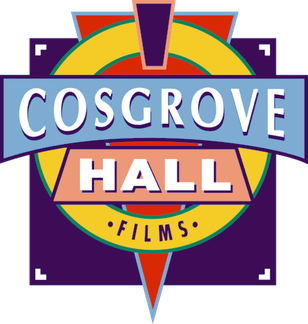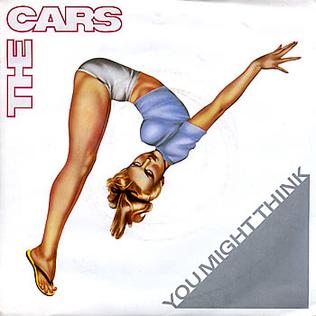Modern animation in the United States from the late 1980s to the late 1990s is referred to as the renaissance age of American animation. During this period, many large American entertainment companies reformed and reinvigorated their animation departments, following a dark age during the 1960s to mid 1980s. During this time the United States had a profound effect on animation worldwide.
Nickelodeon is an American pay television channel which launched on April 1, 1979, as the first cable channel for children. It is run by Paramount Global through its networks division's Kids and Family Group. The channel is primarily aimed at children aged 2–17, along with a broader family audience through its program blocks.
Klasky-Csupo, Inc. is an American animation studio located in Los Angeles, California. It was founded in 1982 by producer Arlene Klasky and Hungarian animator Gábor Csupó in a spare room of their apartment and grew to 550 artists, creative workers and staff in an animation facility in Hollywood.

Cosgrove Hall Films was an English animation studio founded by Brian Cosgrove and Mark Hall; its headquarters was in Chorlton-cum-Hardy, Manchester. They are known for stop-motion animation. Cosgrove Hall was once a major producer of children's television and animated programmes/films; Cosgrove Hall's programmes are still seen in over eighty countries. The company was wound down by its then owner, ITV plc, on 26 October 2009. It was mainly known for its series Danger Mouse, The Wind in the Willows and Count Duckula.
A title sequence is the method by which films or television programmes present their title and key production and cast members, utilizing conceptual visuals and sound. It typically includes the text of the opening credits, and helps establish the setting and tone of the program. It may consist of live action, animation, music, still images, and/or graphics. In some films, the title sequence is preceded by a cold open.
Scanimate is an analog computer animation system developed from the late 1960s to the 1980s by Computer Image Corporation of Denver, Colorado.

The Alvin Show is an American animated television series that aired on CBS in the early 1960s. This was the first series to feature the singing characters Alvin and the Chipmunks. The Alvin Show aired for one season, from October 4, 1961, to September 12, 1962 and was originally sponsored by General Foods through its Jell-O gelatin and Post Cereal brands. Although the series was created in color, it was initially telecast in black and white. It was later rebroadcast in color from 1962-65 for Saturday mornings on CBS and again Saturday mornings on NBC in 1979.

Daniel Edward Antonucci is a Canadian animator, director, producer, and writer. Antonucci is known for creating the Cartoon Network animated comedy series Ed, Edd n Eddy. He also created Lupo the Butcher, Cartoon Sushi, and The Brothers Grunt.
VirtualMagic Animation, Inc. was an American traditional animation studio and software development company based out of Los Angeles, California. The studio produced animation for television series and commercials, and provided ink and paint services to animated TV series such as The Ren and Stimpy Show and The Simpsons and films such as We're Back! A Dinosaur's Story. Its software division was best known for developing USAnimation, a high-end software package designed to facilitate the traditional animation process using digital technologies.
Pacific Data Images (PDI) was an American computer animation production company based in Redwood City, California, that was bought by DreamWorks SKG in 2000. It was renamed PDI/DreamWorks and was owned by DreamWorks Animation.
Mark Gravas is an Australian animator, director and producer. He is the creator/director of Yakkity Yak (2002/2003), an Australian/Canadian co-production. Mark co-owns Sydney based media production company Kapow Pictures with his partner Sandra Walters.

Sunbow Entertainment was an American animation studio and distributor, founded on June 23, 1980, and owned until May 4, 1998, by Griffin-Bacal Advertising in New York City and in the United States. Griffin-Bacal's first animations were animated commercials for Hasbro's G.I. Joe toy line. The success of the animated commercials led partners Tom Griffin and Joe Bacal to form the company. Due to their close working relationship with Hasbro, Sunbow came to be recognized as the toy giant's unofficial television arm.
Cuppa Coffee Studios is a Canadian production company headquartered in Toronto, Ontario. Cuppa Coffee was founded by Adam Shaheen in 1992. It specializes in both stop-motion animation and 2D animation, winning over 150 international awards. Cuppa Coffee is currently developing live-action content through Cuppa Coffee USA.

"You Might Think" is a song by American rock band The Cars from their fifth studio album, Heartbeat City (1984). The track was written by Ric Ocasek and produced by Mutt Lange and the Cars, with Ocasek also providing the lead vocals.
Curious Pictures was an American animation studio and multi-media company that was primarily based in New York City that produced television programs, commercials, animation, and video games. The company is known for its flagship work such as the preschool television series A Little Curious for HBO, Little Einsteins for Playhouse Disney, and Team Umizoomi for Nickelodeon. Other well-known works include Sheep in the Big City and Codename: Kids Next Door for Cartoon Network.
Alex Weil was the founder and executive creative director of the New York City based digital design and production studio Charlex, which he founded alongside Charlie Levi. He was awarded the "Video of the Year" MTV Video Music Award in 1984 for directing "You Might Think" by The Cars, and also wrote and directed the SIGGRAPH award-winning short digital animation One Rat Short.
Nickelodeon is an American basic cable and satellite television network that is part of the Nickelodeon Group, a unit of the Paramount Media Networks division of Paramount Global, which focuses on programs for children and teenagers.
The history of computer animation began as early as the 1940s and 1950s, when people began to experiment with computer graphics – most notably by John Whitney. It was only by the early 1960s when digital computers had become widely established, that new avenues for innovative computer graphics blossomed. Initially, uses were mainly for scientific, engineering and other research purposes, but artistic experimentation began to make its appearance by the mid-1960s – most notably by Dr Thomas Calvert. By the mid-1970s, many such efforts were beginning to enter into public media. Much computer graphics at this time involved 2-dimensional imagery, though increasingly as computer power improved, efforts to achieve 3-dimensional realism became the emphasis. By the late 1980s, photo-realistic 3D was beginning to appear in film movies, and by mid-1990s had developed to the point where 3D animation could be used for entire feature film production.

Nickelodeon Digital, often shortened to Nick Digital and originally known as Nickelodeon Creative Labs, is an American animation studio based in New York City which opened in 1994. It is a division of Nickelodeon Animation Studio. Nickelodeon Digital produces some of Nickelodeon's animated series and creates digital content and motion graphics for the Nickelodeon Group. The company's Burbank, California branch creates CGI and visual effects for Nickelodeon's animated series.
Colossal Pictures was an entertainment company that developed and produced television programming, advertising, network branding, and visual effects. Colossal's work has won every major industry award, from the Clio, Emmy, and Grammy Awards to the Cannes Gold Lion and Academy of Interactive Arts & Sciences Top Honor.





